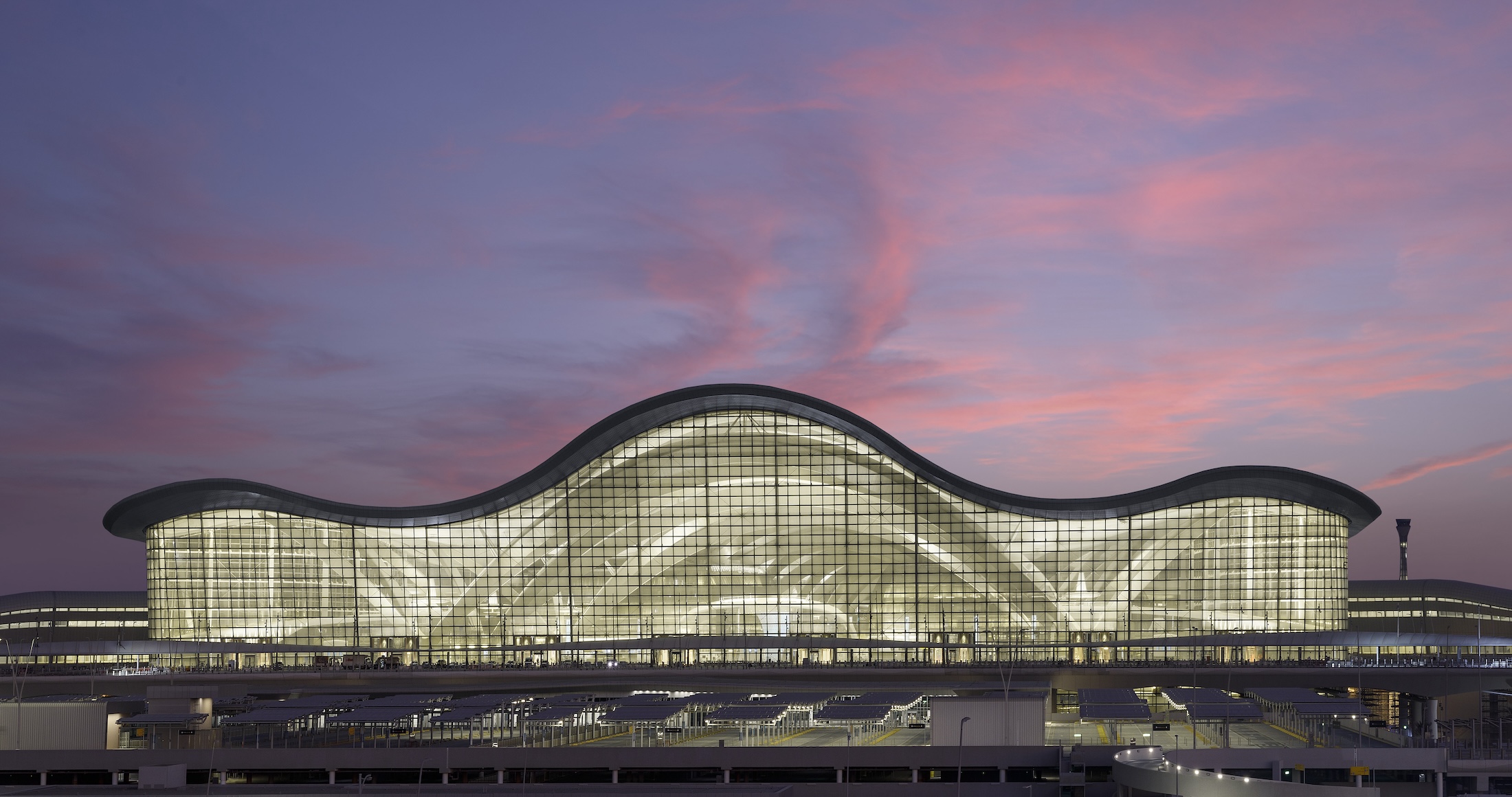Formerly the Abu Dhabi International Airport, the newly renamed Zayed International Airport in the United Arab Emirates has recently opened Terminal A. The airport terminal will serve up to 45 million passengers annually, doubling the airport’s previous capacity.
Kohn Pedersen Fox (KPF) designed Terminal A—the firm’s largest and most complex airport project to date. Arup and Naco provided the engineering services.
The terminal’s freestanding glazed façade, at 50 meters (164 feet) high, provides the interior with abundant daylight. But the glass façade could not use external shading devices, which could be affected by sand accumulation. So instead, to protect passengers from glare and overheating, the design team took inspiration from the desert’s undulating sand dunes to create a roof that drapes over the façade. The team also inclined the façade and used high-performance fritted glass to control glare and reduce the impact of the desert sun.
Also 50 meters high, the departure hall is a largely column-free space. The supporting arches are visually separated from the roof, so that the ceiling seems to appear weightless.
At its widest point, the one-roof terminal is 319 meters (1,047 feet) wide. The central roof, which spans up to 180 meters (591 feet), contains two four-floor buildings and houses a 138-room hotel and offices.
KPF designs landmarks in the airport terminal to orient passengers
Within the terminal’s monumental scale, KPF created several landmarks to orient passengers and provide moments of interest. For example, an elevated staircase in the arrivals hall provides dramatic views of the central space.
The terminal’s X-shape design improves operational efficiency and passenger flow, with an average curb-to-gate walking time of 12 minutes. The design team calibrated the distances between any two points in the terminal to encourage walking and avoid the need for an automated people mover system. To assist with wayfinding, each pier of the X has its own theme: desert, sea, city, and oasis.
“The architecture has a strong connection with the natural environment of this emirate, where each of the four piers points to and is inspired by Abu Dhabi’s desert, sea, city, and oasis,” Elena Sorlini, Managing Director and interim CEO, Abu Dhabi Airports, said in a press statement.

According to the statement, Terminal A will be the world’s first terminal to include all nine biometric airport touchpoints. With 163 retail and food-and-beverage concessions, the terminal will serve 28 airlines and 117 global destinations.
“From the outset, our goal was for the airport to serve the emirate and represent the city of Abu Dhabi, with a design that referenced its cultural and natural environment,” said Mustafa Chehabeddine, Design Principal, KPF. “We established a design language for continuity and flow throughout the project, developing a set of guidelines that ensured each element of the terminal, from the check-in desks to the lighting chandeliers, felt as though it belonged in the building.”
Here is the Design Essay from KPF:
The terminal is raised above the road level, as if on its own plateau, with its illuminated interior providing a striking presence on the horizon. The building is instantly recognisable to drivers on the Dubai-Abu Dhabi highway, which links the UAE’s two largest cities.
On the approach to the terminal, the integrated system of roads and landscape leads passengers to the imposing, 50-meter-tall, free-standing glazed façade and monumental space inside.
The scale of the Departure Hall—a 50-meter-high, largely column-free space—endows the building with an open, outdoor quality, further enhanced by atmospheric lighting. The supporting arches are visually separated from the roof, making the ceiling feel almost weightless. Two four-storey buildings are contained under the central roof and house a 138-room hotel and offices.
A key challenge in the envelope design was to provide ample daylight whilst protecting passengers against glare and overheating. This balance was achieved without the use of external shading devices, which could be affected by sand accumulation. Rather, by purposefully undulating the form of the roof and draping it over the façade, the amount of glazing along the piers was cut in half, while inclining the façade further reduces the impact of the desert sun. High-performance glass, with fritting in a graduated pattern, was used where glazing was required to control glare.
To balance the terminal’s monumental scale, KPF created a series of landmarks, including the Sana Al Nour, the Feature Staircase, and the sculptural Shell, to orient passengers and provide moments of interest along their journey.
Inspired by traditional Islamic architecture, Sana Al Nour was designed by Carpenter | Lowings in collaboration with KPF and the wider design team to direct light and air from the Departures to the Arrivals Hall. One of the largest indoor public art features in the Middle East, it is 22 meters tall by 30 meters wide and features 1,632 individual curved leaves of translucent glass.
The Shell and Feature Staircase
Often airports prioritize the departure experience. At Terminal A, the arrival sequence is elevated in the building to provide dramatic views over the central space. Linking the arrival corridor with the Arrivals Hall, the feature staircase is an exciting first step in one’s journey to Abu Dhabi.
Located at the end of the passengers’ journey, the Shell’s exterior is composed of glass with a fading frit pattern that becomes more transparent as it rises and picks up colors from the lighting. Inside the glass, a three-dimensional sculpture references the wayfinding patterns that occur throughout the terminal. This element combines polished brass with Cor-Ten steel, generating visual interest through an interplay of smooth and rough surfaces. From here, a spiral stair with concrete treads, suspended within a curved glass enclosure, leads to the floor below.
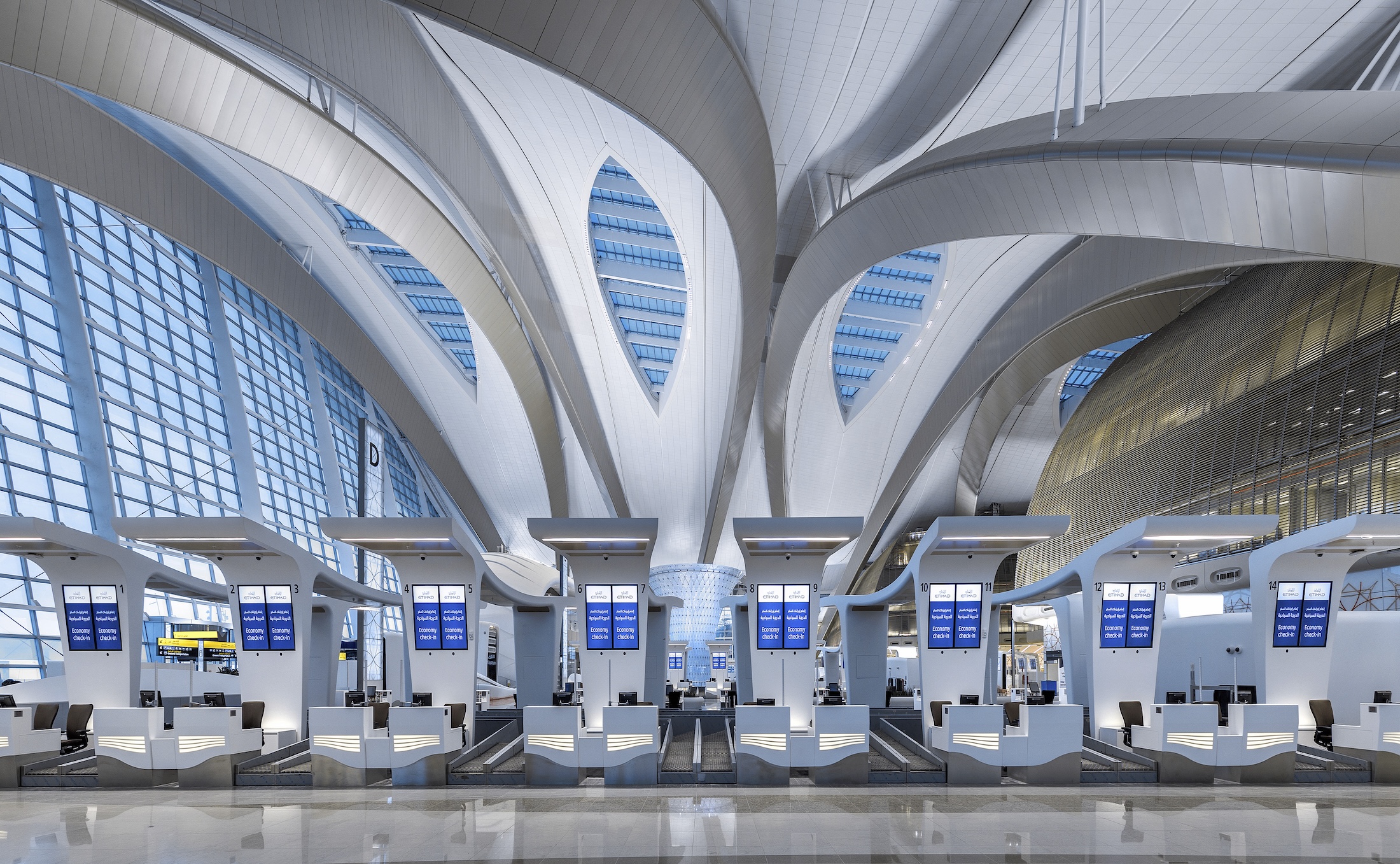
Setting a New Standard in Airport Passenger Experience
Creatively and meticulously planned, Terminal A boasts an average curb-to-gate walking time of only 12 minutes. Terminals with pier-based layouts offer simpler organization and higher aircraft capacity, but often result in longer walking distances for passengers. At Terminal A, the distance from front door to last gate, and between any two points, was carefully calibrated to encourage walking and avoid the need for an APM (automated people mover) system for the first phase. Parametric geometry modeling was used extensively in the design process to optimize the X-shaped plan for operational efficiency and passenger flow.
To aid wayfinding, each pier of the X is themed, inspired by a different element of Abu Dhabi’s character: desert, sea, city, and oasis. As a major airport for international connections, an efficient transfer process was required. The centralized baggage handling system has enabled the fastest transfer connection time of just 45 minutes, which is best in class.
Terminal A will be the first terminal in the world to include all nine biometric airport touchpoints (see infographic in images). In the first phase, biometric solutions will be installed in key areas, such as self-service bag drops, immigration eGates, and boarding gates. These and other cutting-edge technologies, including an advanced baggage handling system capable of processing up to 19,200 bags per hour, will make the Terminal A passenger journey one of the world’s most seamless and efficient.
Anticipating the Future of Air Travel
Appreciating that the nature and operation of air travel is ever changing, the terminal was designed to accommodate varied interior layouts by using large-span, structural arches as an alternative to the fixed column grid found in most modern terminals. The one-roof terminal is 319 meters wide at its widest point, with the central roof, supported by a series of paired leaning arches, spanning up to 180 meters. Elements below can be adjusted on an as-needed basis to accommodate changes in check-in, emigration, security, or otherwise.
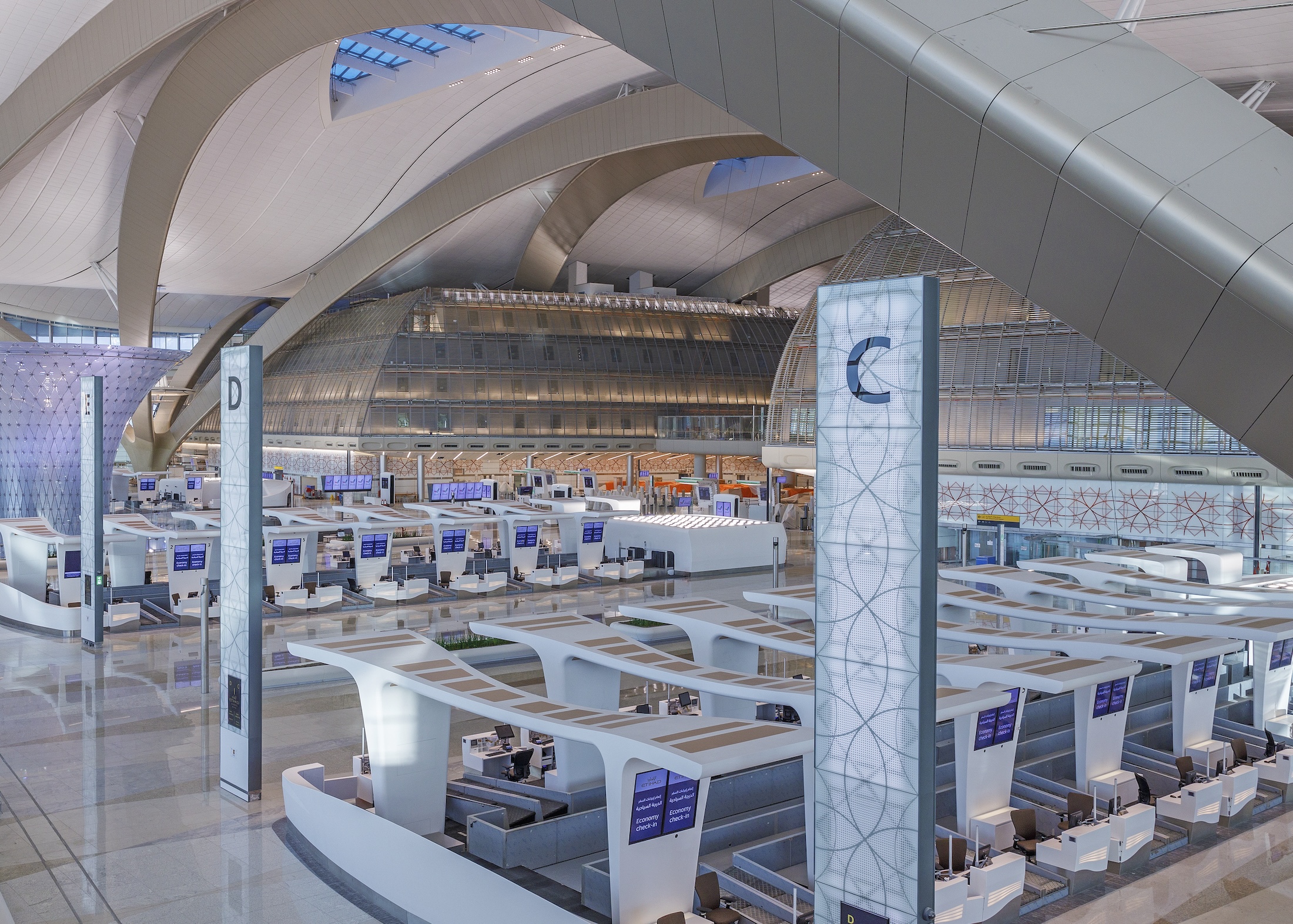
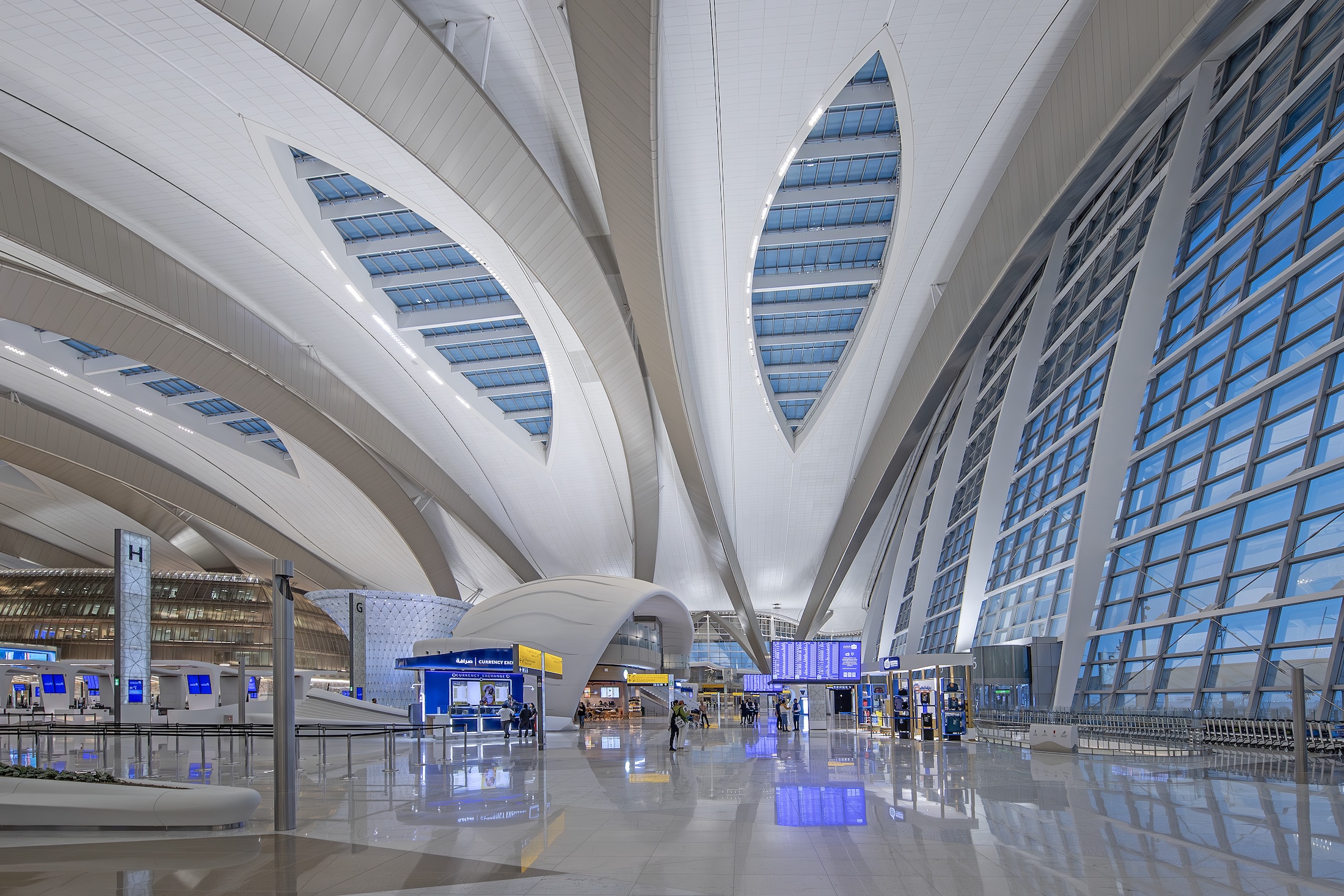

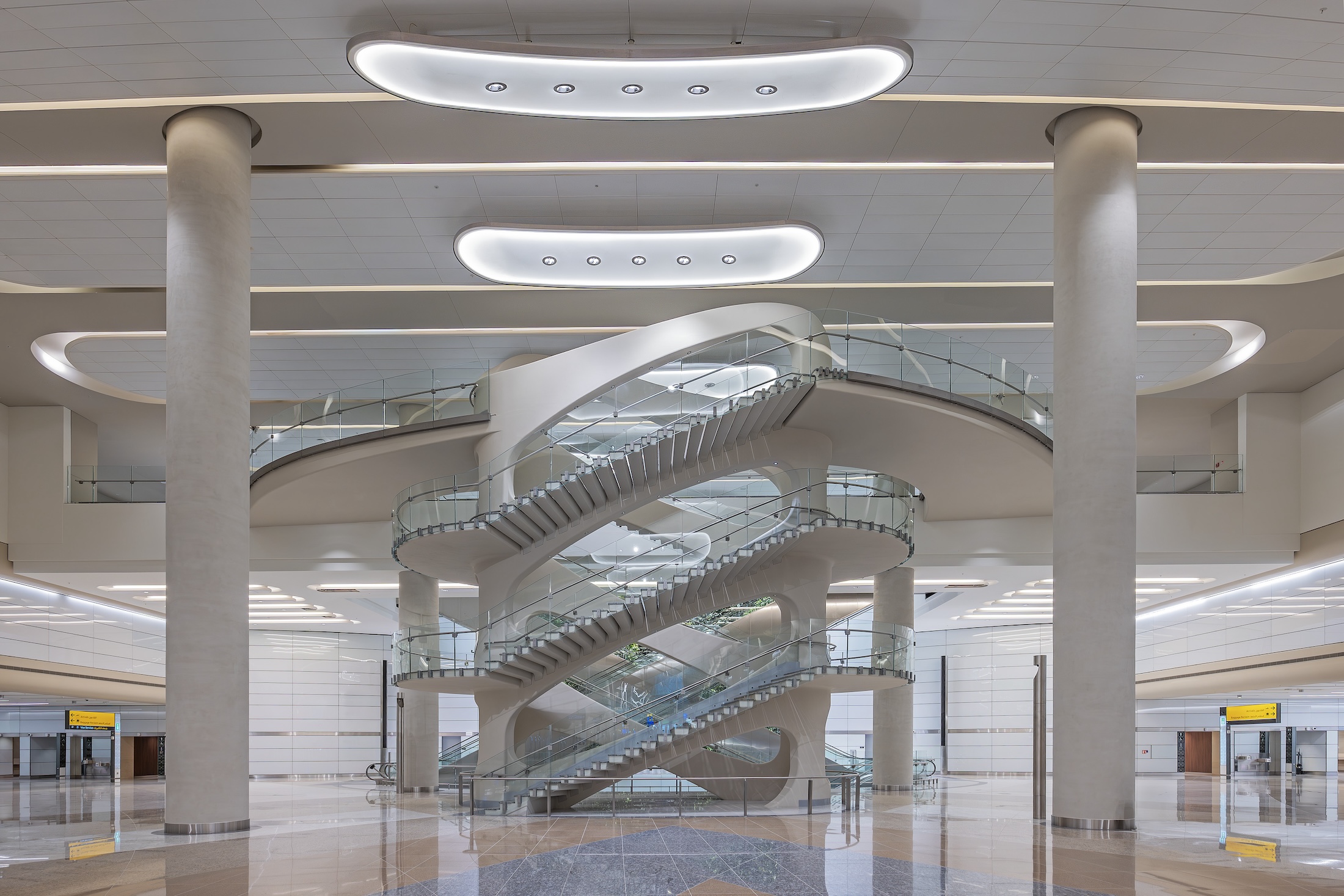

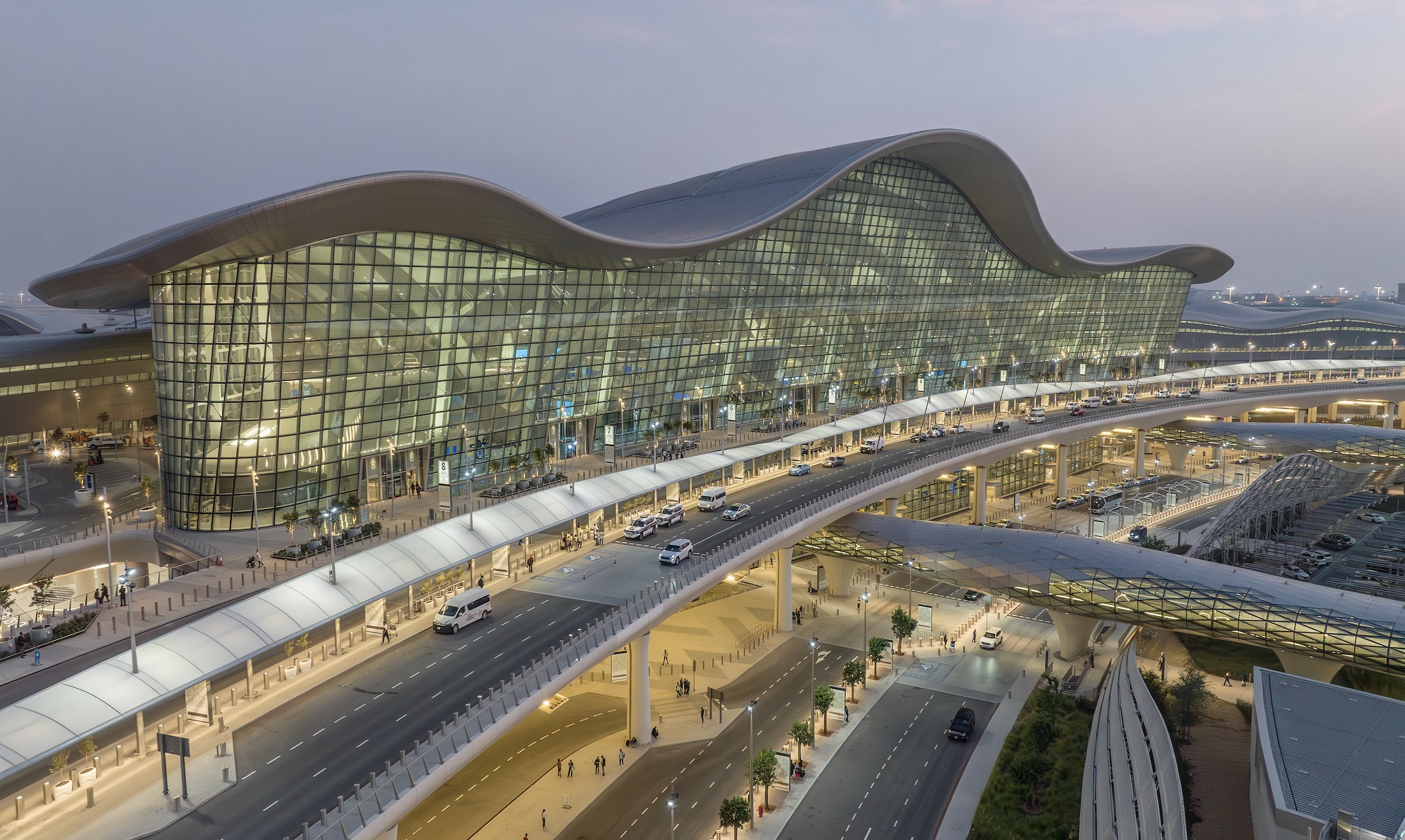
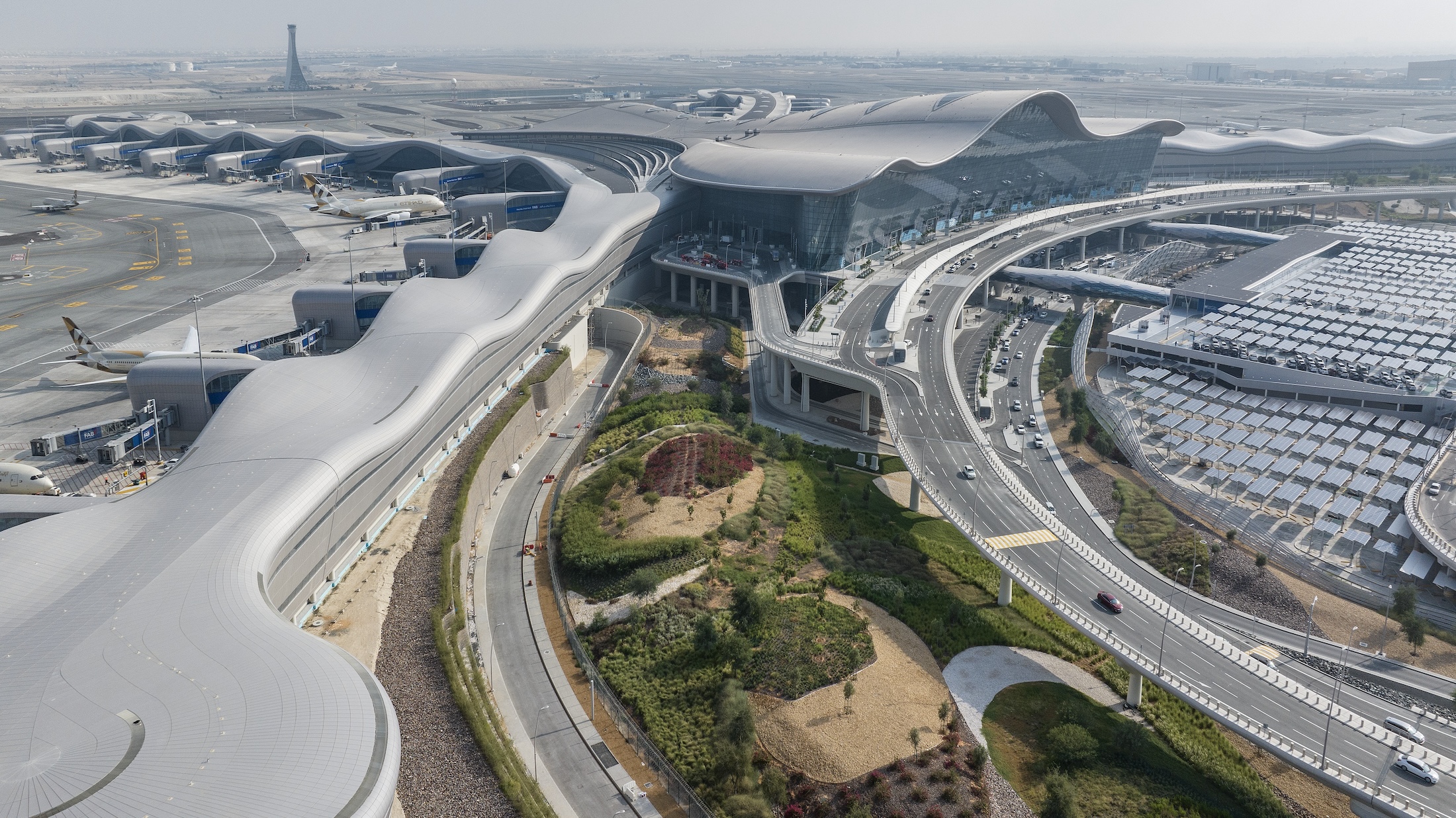
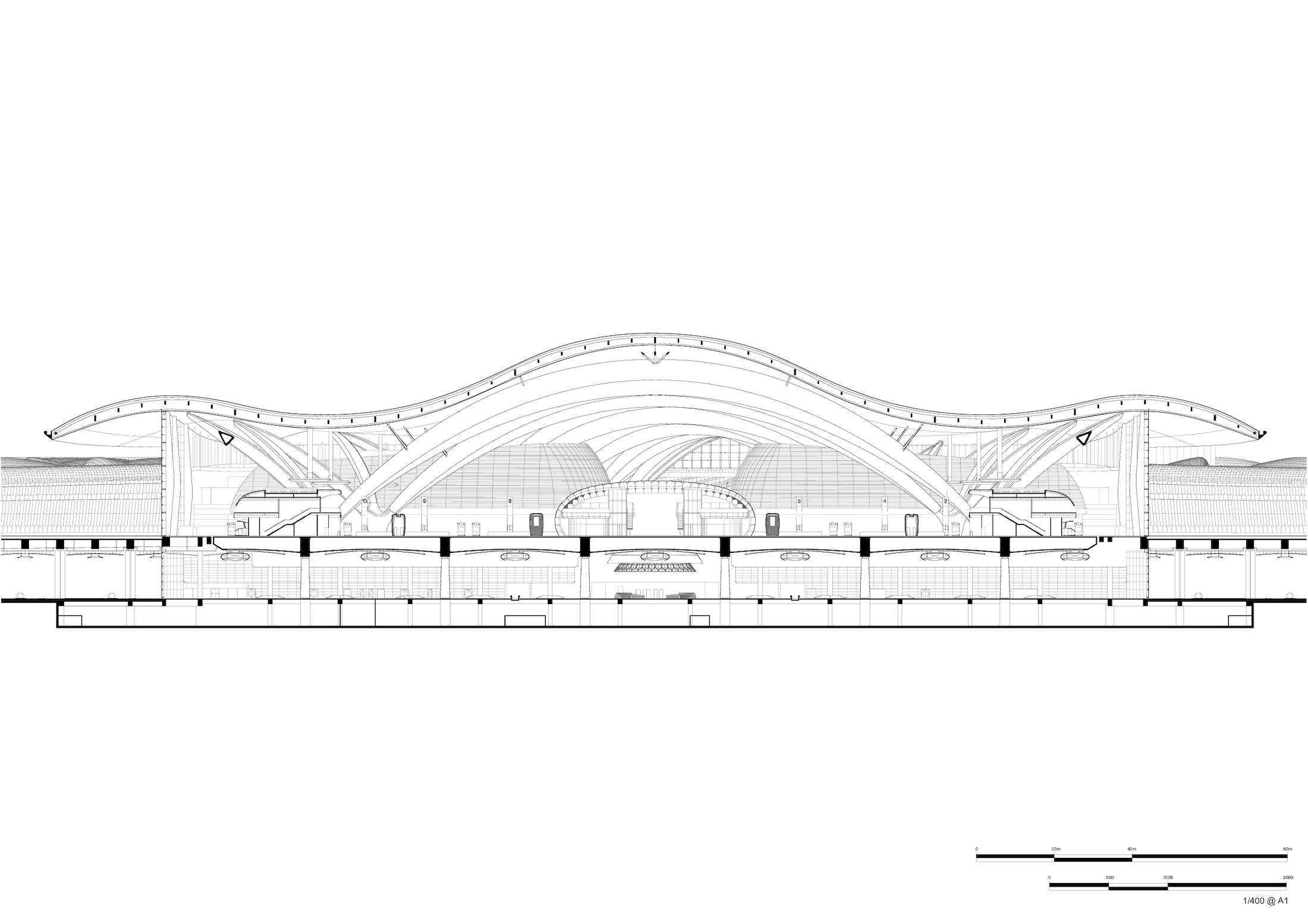
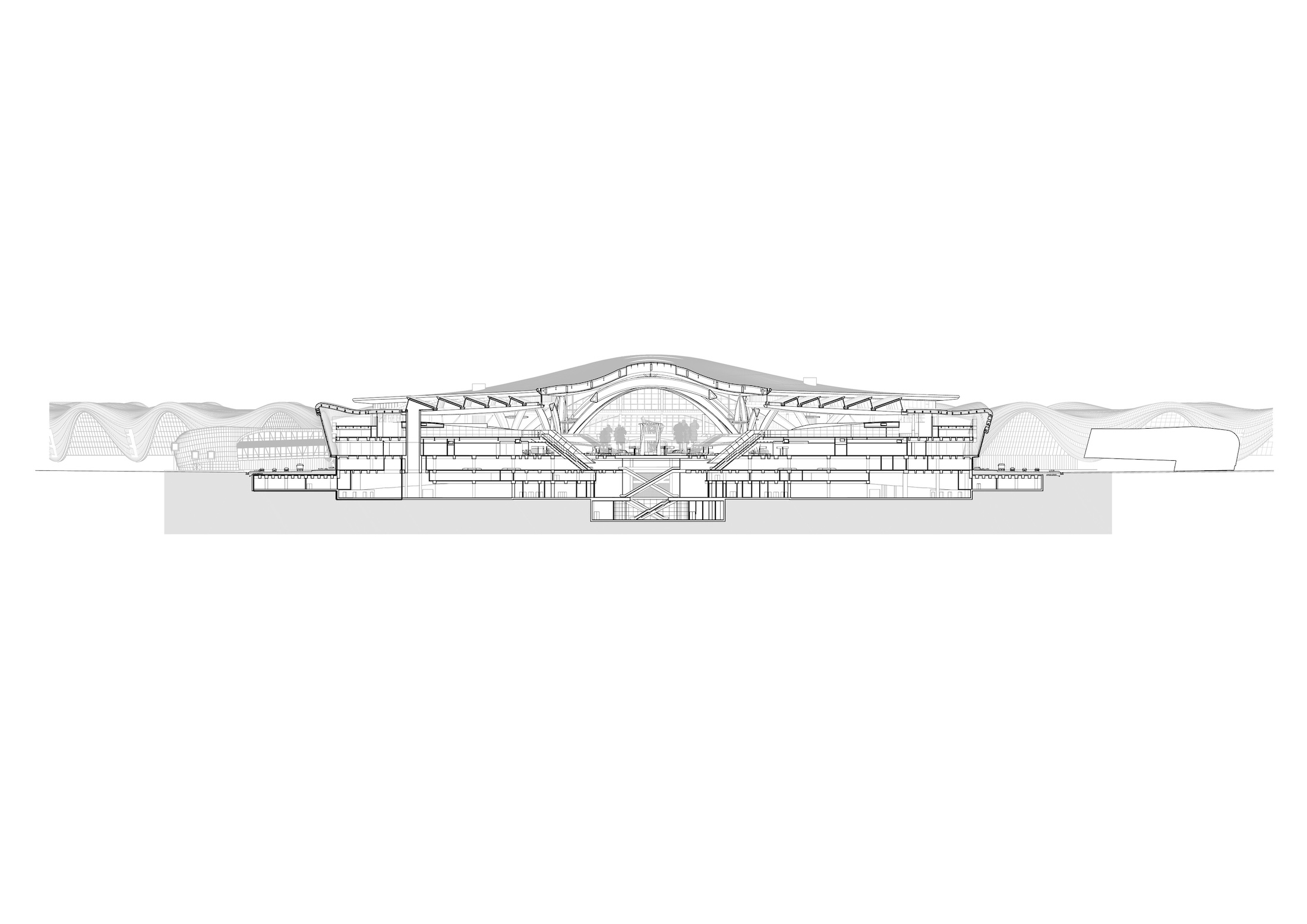
Related Stories
AEC Tech | Oct 16, 2024
How AI can augment the design visualization process
Blog author Tim Beecken, AIA, uses the design of an airport as a case-study for AI’s potential in design visualizations.
Airports | Aug 22, 2024
Portland opens $2 billion mass timber expansion and renovation to its international airport
This month, the Portland International Airport (PDX) main terminal expansion opened to passengers. Designed by ZGF for the Port of Portland, the 1 million-sf project doubles the capacity of PDX and enables the airport to welcome 35 million passengers per year by 2045.
Smart Buildings | Jul 25, 2024
A Swiss startup devises an intelligent photovoltaic façade that tracks and moves with the sun
Zurich Soft Robotics says Solskin can reduce building energy consumption by up to 80% while producing up to 40% more electricity than comparable façade systems.
Great Solutions | Jul 23, 2024
41 Great Solutions for architects, engineers, and contractors
AI ChatBots, ambient computing, floating MRIs, low-carbon cement, sunshine on demand, next-generation top-down construction. These and 35 other innovations make up our 2024 Great Solutions Report, which highlights fresh ideas and innovations from leading architecture, engineering, and construction firms.
Airports | Jun 3, 2024
SOM unveils ‘branching’ structural design for new Satellite Concourse 1 at O’Hare Airport
The Chicago Department of Aviation has revealed the design for Satellite Concourse 1 at O’Hare International Airport, one of the nation’s business airports. Designed by Skidmore, Owings & Merrill (SOM), with Ross Barney Architects, Juan Gabriel Moreno Architects (JGMA), and Arup, the concourse will be the first new building in the Terminal Area Program, the largest concourse area expansion and revitalization in the airport’s almost seven-decade history.
Products and Materials | May 31, 2024
Top building products for May 2024
BD+C Editors break down May's top 15 building products, from Durat and CaraGreen's Durat Plus to Zurn Siphonic Roof Drains.
Biophilic Design | May 6, 2024
The benefits of biophilic design in the built environment
Biophilic design in the built environment supports the health and wellbeing of individuals, as they spend most of their time indoors.
Architects | May 2, 2024
Emerging considerations in inclusive design
Design elements that consider a diverse population of users make lives better. When it comes to wayfinding, some factors will remain consistent—including accessibility and legibility.
Airports | Apr 18, 2024
The next destination: Passive design airports
Today, we can design airports that are climate resilient, durable, long-lasting, and healthy for occupants—we can design airports using Passive House standards.
Urban Planning | Feb 5, 2024
Lessons learned from 70 years of building cities
As Sasaki looks back on 70 years of practice, we’re also looking to the future of cities. While we can’t predict what will be, we do know the needs of cities are as diverse as their scale, climate, economy, governance, and culture.


